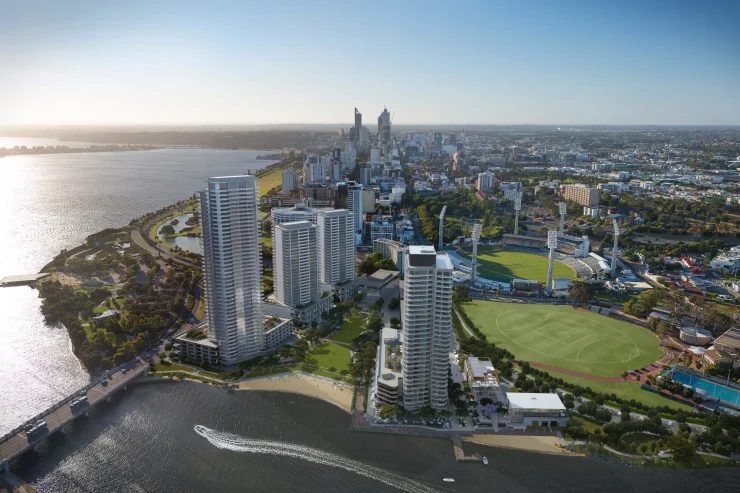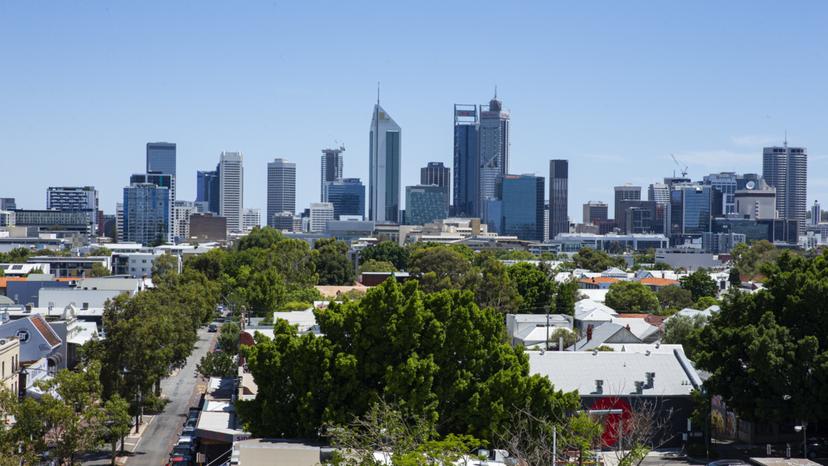Super-sized lots now a roadblock for desperately needed housing developments in Perth
Sarah Brookes, WA Today | October 18, 2024

A render of the proposed Waterbank project which proved too unstable for large buildings and required serious geotechnical works.
The state government has been urged to revisit its boutique master planned urban renewal development model which led to the regeneration of inner-city areas such as Subiaco, East Perth and Northbridge during the 1990s and early 2000s.
Limnios Property Group managing director James Limnios said the overreliance on large eastern states companies to develop large lots had held back the supply of new housing in the inner city.
He said the exit of global housing developer Frasers Property Australia from the WA market to focus on the more profitable east coast highlighted the need for the state government to take a new approach to developing large residential lots in the inner-city area.
“The failed policy of large super-sized lots was initiated more than a decade ago and to a large extent has been a significant policy failure resulting in a shortage of housing stock in fringe city areas,” he said.
Limnios said a prime example was the failure to realise a revitalised and booming eastern edge of Perth after developer Lendlease announced it was exiting the $1 billion Waterbank project on reclaimed land along the Swan River overlooked by the Causeway Bridge.
Lendlease was first announced by the Barnett government as the successful contractor for the Waterbank project in 2011 to build hotels, apartments and office buildings on the site. The first building on the six-hectare, nine-lot site was a $116-million, 32-storey residential tower.
“The prime site was awarded to a very large company back in 2011 to great fanfare with the expectation the company would transform the area into a $1 billion vibrant inner-city community,” he said.
“The project was subsequently not able to proceed resulting in a loss of time and investment for everyone concerned, with the company involved handing back the site to DevelopmentWA two years ago.
“After 12 years the site remains a large sandpit with no prospect of being developed because of its current super-size and the flawed policy that supports this strategy.”
Planning and Housing Minister John Carey said the comments regarding Waterbank were incorrect and the redevelopment never eventuated because the site proved too unstable for large buildings and required serious geotechnical works.
He also defended the state government’s handling of the housing crisis stating the government had a proven track record of successful delivery of major urban renewal projects.
“The Cook Government is tackling a number of large-scale redevelopment projects which are currently undergoing major urban renewal works to boost the State’s housing supply – including projects in North Beach, Subiaco, the Perth City Link and Bentley,” he said.
“We’ve undertaken significant investigations to utilise the Waterbank site, however, the advice is the land is too constrained and not suitable for any development at this time.”
A new, interim public open space will instead transform the former Waterbank site with playing fields, native landscaping, pedestrian walkways, lighting and verge upgrades activating the site.
However Limnios said if the site had been broken up into smaller components and locally based boutique developers allowed to tender for them then low rise developments could have been commercially and structurally more viable for the location.
City of Perth Lord Mayor Basil Zempilas, who was running for the Liberal party in the seat of Churchlands, declined to comment.



